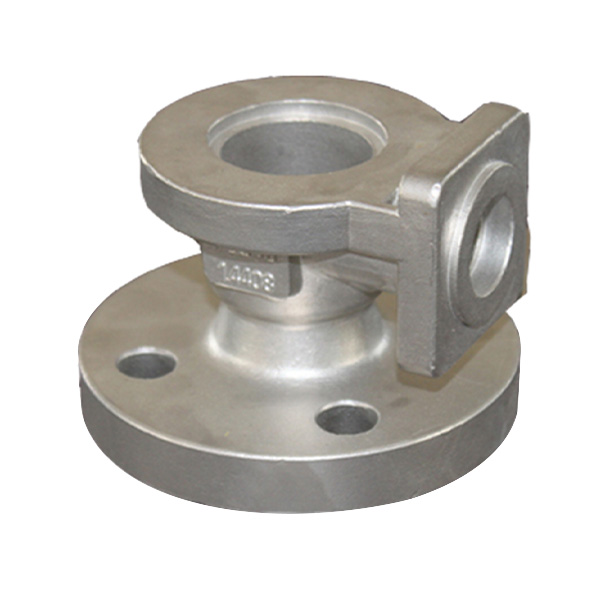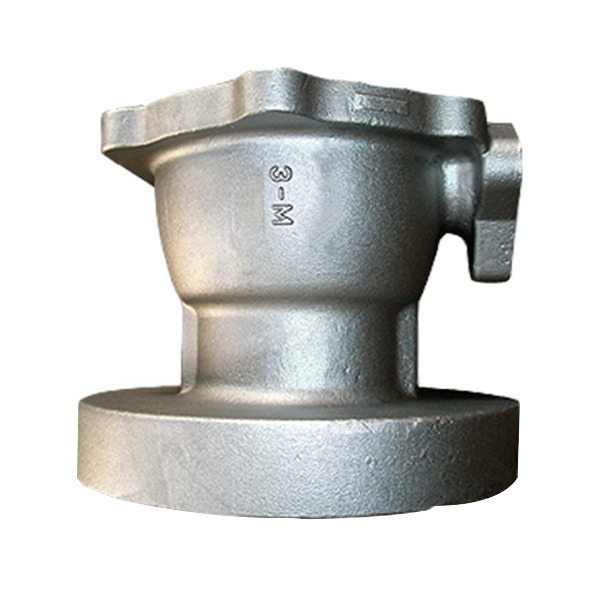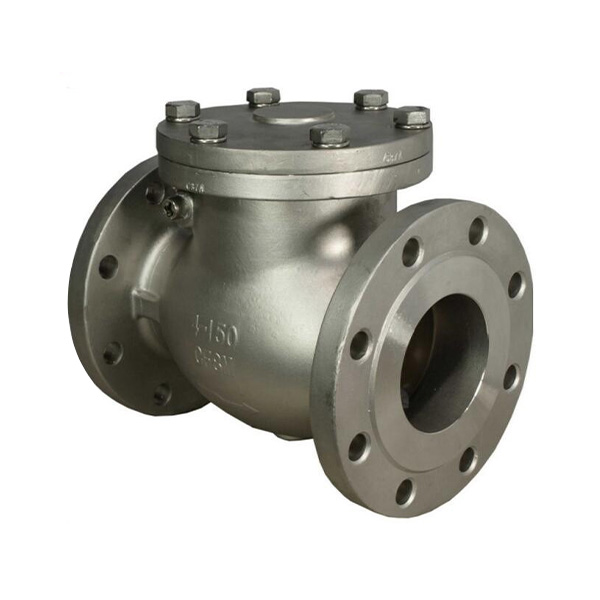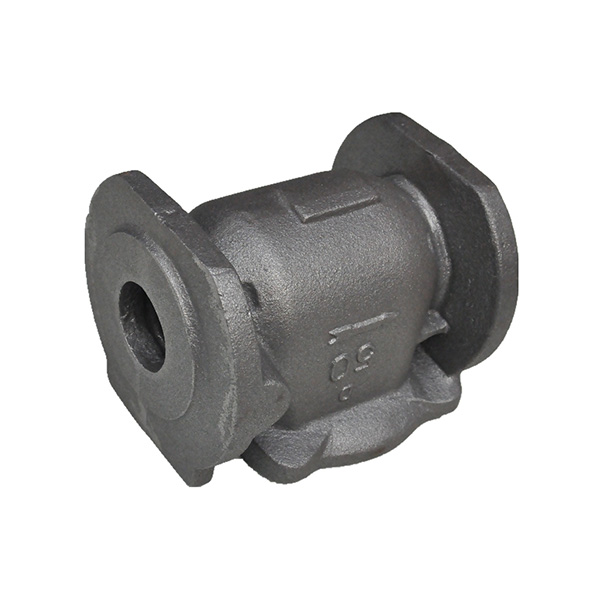Mobile:+86-311-808-126-83
Email:info@ydcastings.com
English
Precision Valve Body & Custom Castings for Demanding Industries
Understanding the Critical Role of the valve body in Industrial Systems
In the intricate architecture of industrial fluid control systems, the valve body stands as the foundational component, dictating flow pathways, pressure integrity, and operational longevity. As the primary pressure-retaining enclosure for internal valve components such as the stem, seat, and disc, its design and manufacturing precision are paramount. The choice of material, the integrity of its casting or forging, and the precision of subsequent machining processes directly impact the performance, safety, and efficiency of entire pipeline networks. From enabling precise regulation in complex petrochemical processes to ensuring reliable water distribution, the quality of a valve body is non-negotiable for critical applications.
This comprehensive guide delves into the technical nuances, manufacturing excellence, and strategic considerations surrounding high-performance valve body solutions, offering insights crucial for B2B decision-makers and engineering professionals.
Industry Trends in Valve Body Manufacturing
The landscape of valve body manufacturing is continually evolving, driven by global demands for higher efficiency, stricter environmental regulations, and advancements in material science. Key trends include:
- Advanced Materials for Extreme Conditions: There's an increasing demand for valve body components made from exotic alloys (e.g., Hastelloy, Monel, Inconel) to withstand ultra-high temperatures, corrosive media, and abrasive slurries, particularly in oil & gas, chemical processing, and power generation sectors.
- Lightweighting and Compact Design: Innovation in casting techniques and simulation tools allows for optimized geometries that reduce material usage without compromising structural integrity, leading to lighter and more compact valve solutions, which are easier to install and maintain.
- Digitalization and Automation: Industry 4.0 principles are integrating into manufacturing, with sensor-equipped valve body designs allowing for real-time performance monitoring, predictive maintenance, and enhanced operational intelligence.
- Sustainability in Production: Manufacturers are increasingly adopting eco-friendly casting practices, reducing waste, optimizing energy consumption, and using recyclable materials. This includes improvements in foundry technologies for both steel and valve casting.
- Enhanced Quality Assurance: The adoption of advanced non-destructive testing (NDT) methods, such as phased array ultrasonics and digital radiography, is becoming standard for ensuring the internal soundness of intricate valve body castings.
These trends underscore a move towards more specialized, efficient, and robust valve components, with a strong emphasis on reliability and environmental responsibility across all related components, including water valve cover cast iron parts.
The Manufacturing Process of a Valve Body
The creation of a high-performance valve body is a meticulous process, demanding expertise across metallurgy, casting, machining, and quality assurance. The typical workflow ensures precision, durability, and adherence to stringent industry standards.
1. Material Selection and Preparation
The initial and critical step involves selecting the appropriate material based on the intended application's pressure, temperature, and corrosive environment requirements. Common materials include:
- Cast Iron: Economical, good machinability, used for low-pressure, non-corrosive applications (e.g., water, air).
- Ductile Iron: Enhanced strength and ductility over standard cast iron, suitable for moderate pressures.
- Carbon Steel (e.g., WCB, LCB): High tensile strength, suitable for high-pressure, non-corrosive or mildly corrosive applications across a range of temperatures.
- Stainless Steel (e.g., CF8, CF8M): Excellent corrosion resistance, ideal for chemical processing, food & beverage, and pharmaceutical industries.
- Alloy Steels (e.g., WC6, C5): Designed for high-temperature and high-pressure service with enhanced creep resistance.
Raw materials are sourced from certified suppliers, ensuring chemical composition adherence and mechanical properties.
2. Forming Process: Casting or Forging
Depending on the material and required mechanical properties, the valve body can be formed via:
- Casting: This is the most common method for complex valve body shapes. Molten metal is poured into a mold (sand, investment, or ceramic), allowed to solidify, and then extracted. Advanced valve casting techniques ensure minimal porosity and optimal grain structure. This is often the process for valve body castings.
- Forging: Used for higher strength requirements, especially for smaller, high-pressure valves. Metal is heated and shaped using compressive forces. This process enhances grain flow and reduces internal defects, providing superior mechanical properties.
Both processes are followed by heat treatment (e.g., annealing, normalizing, quenching and tempering) to optimize material properties, relieve internal stresses, and achieve the desired hardness and toughness.

3. Machining and Finishing
Post-forming, the raw casting or forging undergoes precision machining. This critical stage involves:
- CNC Machining: Computer Numerical Control (CNC) machines accurately bore internal passages, face flange surfaces, machine seat pockets, and thread connections. This ensures dimensional accuracy, surface finish, and tight tolerances crucial for sealing and operational performance.
- Seat Ring Insertion/Welding: For certain designs, seat rings made of wear-resistant materials are either press-fit or welded into the valve body.
- Surface Treatment: Depending on the application, surfaces may undergo specialized treatments like polishing, coating (e.g., PTFE, ceramic), or passivation to enhance corrosion resistance or reduce friction.
4. Testing and Quality Assurance
Every valve body undergoes rigorous testing to comply with international standards such as ISO 9001, ANSI B16.34, API 600, and NACE MR0175. Key tests include:
- Hydrostatic Testing: To verify pressure integrity of the valve body casting.
- Non-Destructive Testing (NDT): Radiography (RT), Ultrasonic Testing (UT), Magnetic Particle Testing (MT), and Liquid Penetrant Testing (PT) are used to detect internal and surface flaws in valve body castings.
- Material Verification: Positive Material Identification (PMI) confirms alloy composition.
- Dimensional Inspection: Ensures all critical dimensions meet design specifications.
These stringent testing protocols ensure a long service life, typically ranging from 15 to 30+ years, depending on the material, application, and maintenance schedule.
Target Industries and Advantages
High-quality valve body components are indispensable across various sectors:
- Petrochemical & Oil & Gas: Essential for safety, control of highly flammable and corrosive fluids; advantages include corrosion resistance and high-pressure integrity.
- Metallurgy & Mining: Handles abrasive slurries and high-temperature gases; advantages are wear resistance and durability.
- Water Supply & Drainage: Critical for municipal infrastructure; advantages include energy saving through optimized flow, and corrosion resistance for long-term reliability.
- Power Generation: Manages steam, water, and fuel flows at extreme temperatures and pressures; advantages include thermal stability and leak prevention.
- Pharmaceutical & Food Processing: Requires sterile and non-contaminating materials; advantages are hygienic design and FDA-compliant materials.
The meticulous process ensures that each valve body delivers reliable, long-lasting performance in its demanding operational environment.
Technical Specifications and Performance Parameters
Understanding the precise technical specifications of a valve body is crucial for its correct selection and integration into any industrial system. Parameters such as material composition, pressure rating, temperature limits, and dimensional tolerances directly influence a valve's suitability for specific applications.
Typical Valve Body Specifications Table
| Parameter | Description | Typical Range / Value | Relevant Standard |
|---|---|---|---|
| Material Grade | Chemical composition & mechanical properties | WCB, CF8M, LCB, C5, A105, F316 | ASTM A216, A351, A105, A182 |
| Nominal Size (DN/NPS) | Pipe diameter compatibility | DN 15 to DN 1200 (NPS ½" to 48") | ASME B16.10, EN 558 |
| Pressure Rating | Max working pressure at specific temperatures | Class 150 to Class 2500 (PN 10 to PN 420) | ASME B16.34, EN 1092-1 |
| Temperature Range | Min/Max operating temperature | -196°C to +815°C (-320°F to +1500°F) | ASME B16.34, API 600 |
| End Connections | Method of attachment to pipeline | Flanged, Welded (BW/SW), Threaded | ASME B16.5, B16.11, B1.20.1 |
| Wall Thickness | Minimum material thickness for pressure containment | Varies by size & class (e.g., 6mm to 70mm) | ASME B16.34, API 600 |
| Surface Finish (Internal) | Roughness average (Ra) for flow efficiency/hygiene | Ra 3.2 µm to 0.4 µm (125 to 15 Ra µin) | ASME B46.1, ISO 4287 |
These parameters are meticulously controlled during the manufacturing of valve body castings to ensure compliance and optimal performance under design conditions.
Application Scenarios and Industry Impact
The versatility and robustness of a well-engineered valve body allow its deployment across a vast array of challenging industrial environments. Its primary function is to contain the fluid and provide structural integrity for the internal components, making it integral to various valve types and applications.
- Oil & Gas Exploration and Production: In upstream, midstream, and downstream operations, valve body components are exposed to high pressures, abrasive drilling muds, and corrosive crude oil/natural gas. They are critical for choke valves, gate valves, and ball valves used in wellheads, pipelines, and refineries.
- Chemical Processing Plants: Handling a myriad of aggressive chemicals, the valve body must offer superior chemical resistance. Materials like stainless steel, Hastelloy, and Monel are commonly used for globe valves, plug valves, and diaphragm valves to prevent leaks and ensure process safety.
- Power Generation Facilities: In conventional, nuclear, and renewable energy plants, valve body integrity is paramount for steam isolation, feedwater control, and cooling water systems. High-temperature, high-pressure applications demand alloy steel valve body castings that maintain structural integrity under extreme thermal cycling.
- Water and Wastewater Treatment: For municipal water supply, irrigation, and sewage systems, large diameter valve body components (often ductile iron or cast iron) are used in gate valves, butterfly valves, and check valves. Durability, corrosion resistance against treated water, and cost-effectiveness are key. This is where components like water valve cover cast iron also play a significant role.
- HVAC and Building Services: Smaller valve body assemblies are integral to heating, ventilation, and air conditioning systems, ensuring precise control of water and refrigerant flows within commercial and residential buildings.
The reliability of the valve body directly translates to operational efficiency, reduced downtime, and enhanced safety across these diverse industrial landscapes. Its impact is felt in continuous production, minimized environmental risks, and optimized resource utilization.

Technical Advantages of High-Quality Valve Body Castings
Investing in superior valve body castings offers tangible technical and operational advantages, crucial for enhancing system reliability and reducing total cost of ownership (TCO). These advantages stem from rigorous manufacturing processes and adherence to quality standards.
- Superior Pressure Containment: High-quality valve body designs, engineered with finite element analysis (FEA) and robust casting techniques, ensure maximum pressure integrity, preventing catastrophic failures and ensuring safe operation even under fluctuating system pressures.
- Enhanced Corrosion Resistance: Precision alloy compositions and advanced surface treatments provide exceptional resistance to aggressive media, extending the service life of valve body castings in highly corrosive environments. This minimizes material degradation and avoids costly replacements.
- Optimal Flow Dynamics: Smooth internal passages, free from casting defects or sharp transitions, reduce turbulence and pressure drop, leading to improved energy efficiency and reduced operational costs. This is particularly relevant for large-scale fluid transfer systems.
- Dimensional Stability and Precision: Tight manufacturing tolerances, achieved through advanced CNC machining, ensure perfect alignment of internal components and consistent seal performance. This precision is vital for valves requiring accurate flow regulation.
- Extended Service Life and Reliability: Components designed and manufactured to rigorous standards exhibit greater fatigue resistance and overall durability, translating to longer operational periods between maintenance cycles and enhanced system reliability.
- Compliance with Global Standards: Reputable manufacturers adhere to international standards (e.g., ISO, ANSI, API, PED), guaranteeing interoperability, safety, and performance verification, which is critical for global supply chains and regulatory compliance.
These advantages collectively contribute to safer, more efficient, and more sustainable industrial operations, making the selection of a quality valve body a strategic decision.
Vendor Comparison: Choosing the Right Partner for Valve Body Castings
Selecting the right vendor for valve body castings is a strategic decision that impacts project timelines, product quality, and long-term operational costs. Key factors beyond unit price must be considered to ensure a reliable and valuable partnership.
Critical Comparison Parameters for Valve Body Suppliers
| Feature | Tier-1 Supplier (e.g., YD Castings) | Standard Supplier |
|---|---|---|
| Certifications & Compliance | ISO 9001, PED 2014/68/EU, API 600, NACE MR0175, TUV; Full material traceability. | Basic ISO 9001, limited specialized certifications. |
| Material Range & Expertise | Extensive, including carbon steel, stainless steel, duplex, super duplex, exotic alloys (e.g., Inconel, Hastelloy) for diverse valve body castings. | Limited to common materials (carbon steel, 304/316 SS). |
| Manufacturing Technology | Advanced casting (investment, sand, vacuum), precision CNC machining, robotic welding, simulation software. | Conventional sand casting, manual machining. |
| Quality Control & NDT | Comprehensive NDT (RT, UT, MT, PT), PMI, dimensional CMM, in-house metallurgical lab. | Visual inspection, basic dimensional checks, outsourced NDT. |
| Customization Capabilities | Full design engineering support, rapid prototyping, bespoke alloy development for unique valve body geometries. | Limited to slight modifications of existing designs. |
| Lead Time & Reliability | Optimized production schedule, strong supply chain, consistent on-time delivery. | Variable lead times, potential for delays. |
| After-Sales Support | Technical support, warranty, field service, replacement parts availability. | Minimal or ad-hoc support. |
Partnering with a specialized manufacturer like YD Castings, with 20+ years of experience in custom valve casting solutions, ensures access to superior engineering, advanced manufacturing, and rigorous quality control, providing a reliable foundation for your critical applications.

Customized Valve Body Solutions
Many industrial applications present unique challenges that off-the-shelf valve body components cannot adequately address. This is where customized solutions become invaluable, providing tailored designs that meet specific operational, environmental, and performance criteria.
A leading manufacturer of valve casting solutions excels in collaborating with clients to develop bespoke valve body designs. This collaborative approach typically involves:
- Detailed Engineering Consultation: Understanding the precise operating conditions (temperature, pressure, media chemistry, flow rates), space constraints, and functional requirements.
- Material Engineering: Recommending or developing specialized alloys to resist specific forms of corrosion, erosion, or extreme thermal cycling, ensuring optimal material selection for the valve body.
- Design Optimization (CAD & FEA): Utilizing advanced CAD modeling and Finite Element Analysis (FEA) to simulate performance under stress, optimize wall thickness, enhance flow geometry, and minimize weight without compromising strength. This is crucial for complex valve body castings.
- Prototyping and Testing: Creating prototypes and conducting rigorous physical testing to validate design assumptions and ensure the customized valve body meets all performance specifications before full-scale production.
- Manufacturing Process Tailoring: Adapting casting methods (e.g., investment casting for intricate shapes, sand casting for large volumes) and machining strategies to achieve specific surface finishes, tolerances, and geometric complexities.
Such customization ensures that the valve body integrates seamlessly into the client's system, delivering superior performance, extended operational life, and ultimately, a lower total cost of ownership. This flexibility is a hallmark of truly authoritative and expert suppliers.
Real-World Application Case Studies
Experience and proven success in demanding applications are critical indicators of a supplier's capability. Here are examples showcasing the impact of high-quality valve body components:
Case Study 1: Enhanced Durability for Offshore Oil Platform
Challenge: An offshore oil platform required gate valve valve body castings capable of withstanding extreme saltwater corrosion, high pressures (API 10K equivalent), and frequent temperature fluctuations in a remote subsea application. Previous components experienced premature failure due to pitting corrosion and stress cracking.
Solution: YD Castings partnered with the client to develop custom valve body castings using Super Duplex Stainless Steel (ASTM A890 Grade 4A). The design was optimized using FEA for fatigue resistance, and each valve body underwent stringent NDT (UT and Radiography) and hydrostatic testing to 150% of the maximum working pressure. Surface passivation treatments were also applied to enhance corrosion resistance.
Outcome: The customized valve body solutions demonstrated a 300% increase in service life compared to standard components, significantly reducing maintenance costs and ensuring uninterrupted operation of critical subsea pipelines. This led to a 15% reduction in overall operational expenditure over five years.

Case Study 2: Energy Efficiency in Municipal Water Treatment
Challenge: A large municipal water treatment plant sought to improve the energy efficiency of its pumping stations by reducing pressure drop across large butterfly valves. Standard valve body castings caused significant hydraulic losses.
Solution: Working closely with the plant's engineers, YD Castings designed and produced optimized ductile iron valve body components, focusing on streamlining internal flow passages and reducing flow obstructions. Computational Fluid Dynamics (CFD) analysis was used to refine the geometry of the valve body and disc for minimal turbulence. A specialized internal epoxy coating was applied for enhanced corrosion resistance against treated water, including parts like water valve cover cast iron.
Outcome: The new valve body designs resulted in an average 8% reduction in pressure drop across the valves, leading to a measurable decrease in pump energy consumption. This translated to annual energy savings of approximately $50,000 for the plant and extended the operational life of the valves by an additional 10 years due to reduced wear and improved corrosion protection.
Ensuring Trust: FAQ, Lead Time, Warranty, and Support
Building trust with B2B clients requires transparency, clear commitments, and robust support systems. Here's how a reputable valve body manufacturer addresses these critical aspects.
Frequently Asked Questions (FAQ)
-
Q: What materials are available for valve body production?
A: We offer a wide range of materials including Carbon Steel (WCB, LCB), Stainless Steel (CF8, CF8M, CF3M), Alloy Steels (WC6, WC9, C5), Duplex/Super Duplex Stainless Steels (CD3MN, CE8MN, CD3MWCuN), Nickel Alloys (Monel, Hastelloy, Inconel), and Cast Iron/Ductile Iron. Custom alloy development is also available. -
Q: Can you produce valve bodies to specific industry standards (e.g., API, ASME, NACE)?
A: Absolutely. Our manufacturing processes and quality control procedures are fully compliant with major international standards including ASME B16.34, API 600/6D, MSS SP-25, NACE MR0175, and PED 2014/68/EU. All relevant certifications can be provided. -
Q: What is the typical lead time for custom valve body castings?
A: Lead times vary based on complexity, material, and order volume. For standard valve body castings, it typically ranges from 4-8 weeks. For highly customized or exotic alloy components, it may extend to 10-16 weeks. We provide detailed lead time estimates with each quote. -
Q: What is your warranty policy for valve body products?
A: We offer a standard 12-month warranty from the date of installation or 18 months from the date of shipment, whichever comes first, against manufacturing defects and material failures under normal operating conditions. Extended warranties can be negotiated for specific projects.
Lead Time and Fulfillment Details
Our streamlined production process, combined with efficient supply chain management and strategic warehousing of common raw materials, enables us to offer competitive lead times. We utilize robust project management tools to track each order from design through delivery, providing clients with real-time updates and ensuring on-time fulfillment. For urgent requirements, expedited manufacturing options may be available upon request.
Warranty Commitments and After-Sales Support
Our commitment to quality extends beyond delivery. Each valve body component is manufactured to the highest standards, backed by comprehensive quality control and testing. In the rare event of a product issue, our dedicated after-sales support team is readily available to provide technical assistance, troubleshooting, and prompt resolution. This includes:
- Rapid response for technical inquiries.
- On-site support or virtual assistance for complex issues.
- Efficient handling of warranty claims and replacement part dispatch.
- Access to detailed product documentation and maintenance guides.
Our goal is to ensure the long-term satisfaction and operational success of our clients, solidifying our reputation as a trusted partner in industrial valve casting solutions.

Conclusion
The integrity and performance of a valve body are foundational to the operational success, safety, and efficiency of virtually every fluid control system in industrial applications. From the selection of high-grade materials and advanced casting techniques to precision machining and rigorous testing, every stage of the manufacturing process contributes to its critical role. By prioritizing expertise, leveraging advanced technologies, and maintaining unwavering commitment to quality and customer support, manufacturers like YD Castings deliver valve body solutions that meet the evolving demands of industries worldwide. Choosing a partner with a proven track record, extensive technical capabilities, and a deep understanding of application-specific needs is paramount for ensuring the longevity and reliability of your critical infrastructure.
References
- American Society of Mechanical Engineers (ASME). ASME B16.34: Valves—Flanged, Threaded, and Welding End.
- American Petroleum Institute (API). API Spec 600: Steel Gate Valves—Flanged and Butt-welding Ends.
- International Organization for Standardization (ISO). ISO 9001: Quality management systems—Requirements.
- National Association of Corrosion Engineers (NACE International). NACE MR0175/ISO 15156: Petroleum and natural gas industries—Materials for use in H2S-containing environments in oil and gas production.
- European Pressure Equipment Directive (PED). Directive 2014/68/EU on pressure equipment.
-
Materials Used in Manufacturing Cap End Pipe FittingsNewsNov.24,2025
-
Material Properties of CF8M CastingNewsNov.24,2025
-
How to Inspect Pump Cap Ends for DamageNewsNov.21,2025
-
Backward Curved Impeller – Efficient Airflow Solutions for Industry | YD CastingsNewsNov.21,2025
-
Automobile Water Pump - Efficient, Quiet, Durable & ElectricNewsNov.21,2025
-
Impeller for Pumps – High-Efficiency, Durable, OEM-ReadyNewsNov.21,2025











